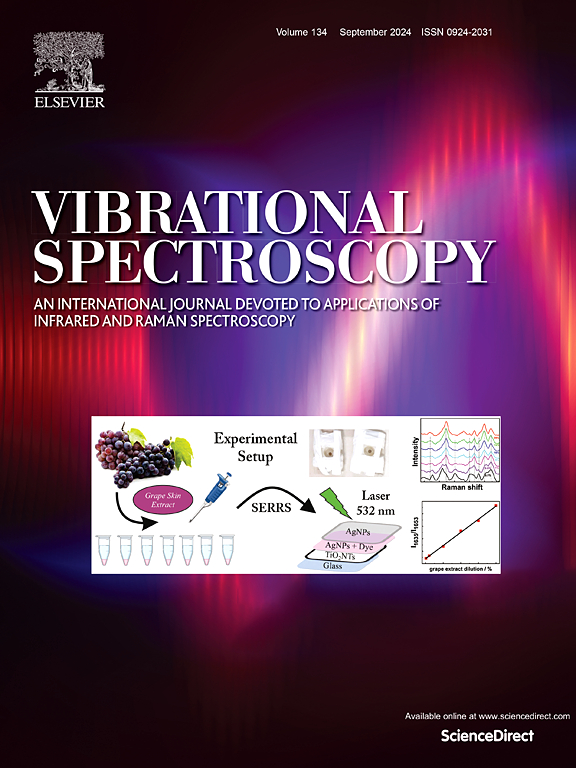快速ATR-FTIR法定量土壤PE塑料碎片上硅酸盐的存在
IF 3.1
3区 化学
Q2 CHEMISTRY, ANALYTICAL
引用次数: 0
摘要
塑料垃圾与土壤环境的相互作用研究尚不充分。特别是,我们最近报道了在聚乙烯(PE)宏观、中观和微塑性表面上掺入一种主要由硅酸盐组成的机械稳定粘土相。这种结合将塑料碎片转化为复合材料,可能导致密度、疏水性和污染物吸附能力等性能的显著变化。因此,量化硅质组分对于更好地理解塑料与环境的相互作用至关重要。EDX法测定硅是一种传统的方法,但耗时长,技术要求高,而且应用范围不广。此外,由于样品FTIR光谱中C-O和Si-O拉伸振动之间的光谱重叠,PE基体上粘土的存在使含氧官能团的识别变得复杂。在这项研究中,开发了一种快速、直接的基于atr - ftir的方法,用于定量测定风化PE覆盖物碎片上的硅。此外,建立了一种鉴定高硅PE样品中Si-O和C-O官能团的可靠方法。Si-O拉伸带的峰面积与pe砂标准硅浓度呈较强的线性相关(R²=0.9878)。该方法与农业土壤中PE样品的EDX测量结果进行了验证,结果吻合良好。此外,柠檬酸钠处理有效地去除了硅质部分,而无需使用有害的氢氟酸,从而可以准确测定氧化指数。所开发的方法简单,快速,并且需要最少的样品制备,为缺乏先进分析技术的实验室提供了一种实用的替代方法。本文章由计算机程序翻译,如有差异,请以英文原文为准。
Fast ATR-FTIR method for quantifying silicates presence on PE plastic fragments from soil
The interaction of plastic debris with the soil environment remains insufficiently studied. In particular, we have recently reported the incorporation of a mechanically stable clay phase—mainly composed of silicates—onto polyethylene (PE) macro-, meso-, and microplastic surfaces. This incorporation transforms plastic fragments into a composite material, potentially leading to significant changes in properties such as density, hydrophobicity, and contaminant sorption capacity. Therefore, quantifying the siliceous fraction is essential to better understand plastic–environment interactions. Determination of silicon by EDX is a conventional method, but is time-consuming, technically demanding, and not widely accessible. Moreover, the presence of clay onto the PE matrix complicates the identification of oxygen-containing functional groups due to spectral overlap between C–O and Si–O stretching vibrations in the sample's FTIR spectra. In this study, a rapid and straightforward ATR-FTIR-based methodology for the quantitative determination of silicon on weathered PE mulch fragments was developed. Furthermore, a reliable approach for the identification of Si–O and C–O functional groups in PE samples with high silicon content was established. The peak area of the Si–O stretching band showed a strong linear correlation with silicon concentration in PE–sand standards (R²=0.9878). The proposed method was validated against EDX measurements of PE samples extracted from agricultural soils, showing good agreement. Additionally, sodium citrate treatment effectively removed the siliceous fraction without the use of hazardous hydrofluoric acid, allowing for accurate determination of oxidation indices. The developed method is simple, rapid, and requires minimal sample preparation, offering a practical alternative for laboratories lacking access to advanced analytical techniques.
求助全文
通过发布文献求助,成功后即可免费获取论文全文。
去求助
来源期刊

Vibrational Spectroscopy
化学-分析化学
CiteScore
4.70
自引率
4.00%
发文量
103
审稿时长
52 days
期刊介绍:
Vibrational Spectroscopy provides a vehicle for the publication of original research that focuses on vibrational spectroscopy. This covers infrared, near-infrared and Raman spectroscopies and publishes papers dealing with developments in applications, theory, techniques and instrumentation.
The topics covered by the journal include:
Sampling techniques,
Vibrational spectroscopy coupled with separation techniques,
Instrumentation (Fourier transform, conventional and laser based),
Data manipulation,
Spectra-structure correlation and group frequencies.
The application areas covered include:
Analytical chemistry,
Bio-organic and bio-inorganic chemistry,
Organic chemistry,
Inorganic chemistry,
Catalysis,
Environmental science,
Industrial chemistry,
Materials science,
Physical chemistry,
Polymer science,
Process control,
Specialized problem solving.
 求助内容:
求助内容: 应助结果提醒方式:
应助结果提醒方式:


